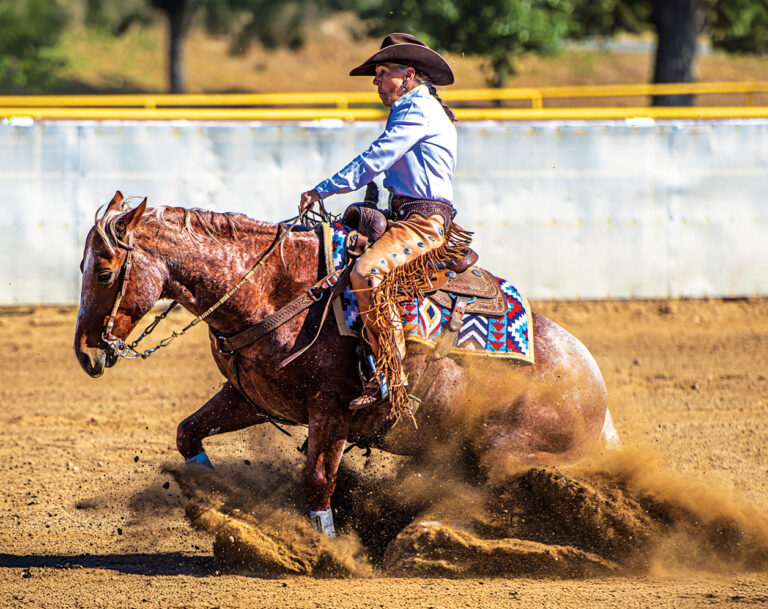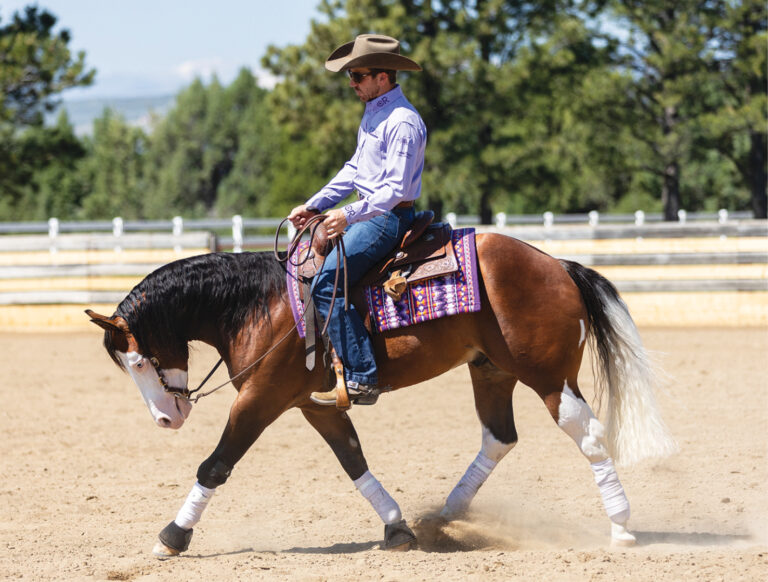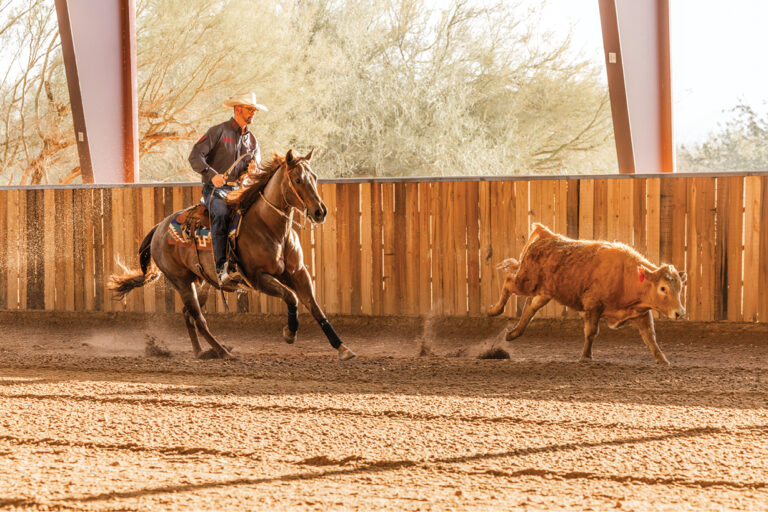Before I can ask my horse to perform a sliding stop for cow horse events, he needs to understand the basics of stopping. The stop is a fundamental every horse should know how to do. It’s something you’ll be required to do in the show pen, but it’s also a cue your horse should be capable of doing when you’re trail riding.
Whether your horse is just learning the basics of stopping or he needs a tune-up before your next show, these tips will help him perfect his stop.

#1: Test your leg cue.
Start by riding your horse next to your arena fence on a loose rein, creating energy with your feet to let him know to go forward. This is your chance to test all of your cues individually test his responsiveness. If you take your feet away from your horse, he should come to a stop without the help of your voice or hands. When you say ‘whoa’ he should stop without you needing to take your legs off your horse and your weight in your stirrups. If you go to your hands to draw him into the ground, he should do so without the use of your voice and seat. Being able to use your leg, hand, and voice cues separately will only help your horse with his stop.
If your horse stops when you take your leg away, pick him up with your hand, back him up a few steps to reinforce it, then stand for a minute. Then turn your horse into the fence and go the opposite direction, staying on a loose rein.
[GET GEAR TIPS FROM BRAD BARKEMEYER]
#2: Test your vocal cue.
This time, test your vocal cue. If your horse stops, do the same thing you did before. If he trickles down to the stop or doesn’t stop at all, immediately turn him into the fence and go the opposite direction. You don’t want the stop to be a punishment. Instead you’re letting him know that if he doesn’t stop like he’s asked to, he’s going to have to work harder by constantly moving.

#3: Increase speed.
Once your horse is responding to your leg and vocal cues at the walk, it”s time to try it out at the trot. Keep your reins loose, and use your legs to create forward momentum. If your horse stops when you release your leg and put pressure in your heels, back a step or two, turn into the fence and immediately go back to the trot. Do this two or three times in a row. If your horse responds to your cue each time, reward him by stopping and resting.
The same goes for your vocal cue. Test his response a couple of times. If he responds each time, let him settle. If he doesn’t, immediately turn him into the fence and ask him to trot in the opposite direction. Let him know that if he doesn’t listen to your cue he has to continue going forward.
#4: Horse-show tune up.
If your horse already knows how to stop but you need to give him a tune-up before it’s time to head to a horse show, you can increase the pressure a little bit by asking him to speed everything up. You can start by trotting him, stop him, turn him into the fence, but instead of a slow turn like you might do when you’re working with a young horse, you can turn it into a rollback and immediately go the opposite direction.
Since he knows how to perform this maneuver, you should expect more of a response out of him. He needs to be listening to your cues and ready to stop when you ask him to.
Three Pieces of Gear to Use When Practicing the Stop:




